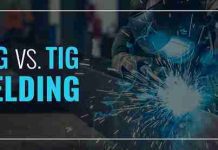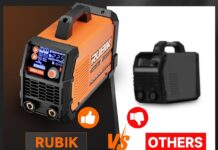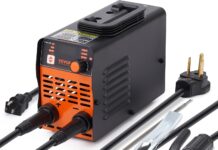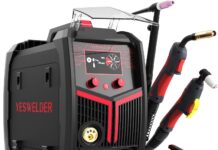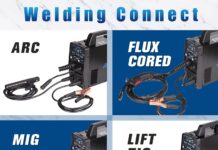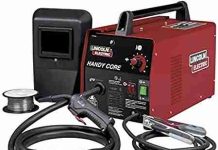In order to ensure the safety and well-being of workers and minimize potential hazards, it is crucial to understand the importance of using the correct safety equipment with welding machines. From protective clothing to safety glasses, gloves, and respiratory protection, each piece of equipment plays a vital role in shielding individuals from the various risks associated with welding. This article aims to explore the essential safety equipment that should be employed while operating welding machines, providing valuable insights to both seasoned professionals and newcomers to the field.
Head and Eye Protection
Welding helmets
When it comes to welding, protecting your head and eyes is absolutely essential. The intense heat and bright light produced during welding can cause serious damage to your eyes and face if not properly protected. That’s where welding helmets come in. These specialized helmets are designed to shield your face and eyes from sparks, heat, and UV radiation. They provide a clear view of the work area while keeping your head and face completely protected. So, whenever you’re working with a welding machine, make sure to wear a high-quality welding helmet to ensure your safety.
Welding goggles
While welding helmets provide full-face protection, welding goggles are a great alternative if you prefer a more compact option. Welding goggles cover your eyes and provide protection against sparks, debris, and harmful UV radiation. They are designed to be lightweight and comfortable, making them a popular choice for welders who need to move around frequently or work in tight spaces. Plus, welding goggles often come with adjustable straps to ensure a snug fit. So, whether you’re a professional welder or a DIY enthusiast, having a pair of welding goggles is a must for protecting your eyes during welding tasks.
Face shields
Another important piece of protective equipment for welders is a face shield. Face shields provide an extra layer of protection, covering not only your eyes but also your entire face. They are typically made of durable materials like polycarbonate, which can withstand impacts and protect against flying debris. Face shields are especially useful when working with high-velocity welding processes or when there is a risk of splatter and sparks. They can be worn in combination with welding helmets or used as standalone protection. Choosing the right face shield that fits securely and provides clear visibility is crucial for ensuring your safety while welding.
Safety glasses
While welding helmets, goggles, and face shields provide comprehensive protection for the face and eyes, safety glasses should not be overlooked. Safety glasses are designed to be worn underneath welding helmets or face shields, adding an extra layer of protection against projectiles and impacts. They typically feature impact-resistant lenses and are designed to fit comfortably over prescription eyewear if necessary. Safety glasses are an essential part of any welding safety gear, providing an additional safeguard for your eyes in case of any accidental slips or exposures. So, don’t forget to wear safety glasses along with your other head and eye protection equipment for complete peace of mind.
Respiratory Protection
Welding respirators
When working with welding machines, respiratory protection is of utmost importance. The fumes and particles produced during welding can be hazardous to your health, leading to various respiratory problems if inhaled regularly. Welding respirators are specifically designed to filter out harmful particles and fumes, ensuring that you breathe clean air while working. These respirators come in different types, such as disposable respirators and reusable respirators with replaceable filters. They create a seal around your nose and mouth to prevent any airborne contaminants from entering your respiratory system. So, whether you’re working indoors or outdoors, make sure to wear a welding respirator to protect your lungs from harmful welding fumes.
Disposable dust masks
In addition to welding respirators, disposable dust masks can be another option for respiratory protection during welding tasks. These masks are lightweight, affordable, and easy to use. While they may not provide the same level of protection as welding respirators, they can still help filter out larger particles and dust, reducing the risk of respiratory irritation. Disposable dust masks are particularly useful during light welding operations or when the level of fumes and particles is minimal. However, it’s important to remember that they have limited effectiveness and should not be relied upon as the sole means of respiratory protection for heavy-duty welding tasks.
Respiratory vent filters
For welders who work in enclosed or confined spaces, respiratory vent filters can be a valuable addition to their protective gear. These filters can be attached to the welding machine exhaust vents to capture and filter out harmful fumes and particles before they are released into the air. Respiratory vent filters help prevent the accumulation of welding fumes in a confined space and minimize the exposure risk for the welder and others in the vicinity. While they don’t replace the need for personal respiratory protection, using vent filters can significantly improve the air quality and overall safety in the workspace.
Hand and Arm Protection
Welding gloves
When you’re working with welding machines, protecting your hands and arms is crucial. Welding gloves are specifically designed to shield your hands from heat, sparks, and electrical shock. They are usually made of durable, heat-resistant materials like leather or a combination of leather and flame-resistant fabrics. Welding gloves provide excellent grip and dexterity, allowing you to handle hot materials and welding equipment with ease. They come in various lengths, from wrist-length gloves to long gauntlet-style gloves that extend up the forearm. No matter the type of welding you’re doing, wearing high-quality welding gloves is essential for keeping your hands safe and protected.
Welding sleeves
To provide even more coverage and protection for your arms, welding sleeves are a great addition to your safety gear. Welding sleeves are worn over your regular clothing and cover the entire forearm, shielding it from sparks, radiant heat, and ultraviolet (UV) radiation. They are usually made of flame-resistant materials and designed to be comfortable and breathable, allowing you to work for extended periods without discomfort. Welding sleeves can be easily worn and removed, making them a convenient option for welders who need additional arm protection without the need for a full welding jacket.
Leather aprons
In addition to gloves and sleeves, wearing a leather apron can offer an extra layer of protection for your torso and legs. Leather aprons are commonly used by welders to protect against sparks, splatter, and hot metal fragments that may land on their bodies. Made from thick and durable leather, these aprons are designed to withstand the intense heat and potential hazards of welding. Leather aprons typically have adjustable straps or ties to ensure a secure fit and can be worn over your regular clothing. They provide excellent coverage, allowing you to work confidently without worrying about burns or injuries to your body.
Arm coolers
Welding can be a physically demanding job, and the heat generated during the process can cause discomfort and fatigue, especially in hot environments. Arm coolers can help alleviate this issue by providing a cooling effect to the arms. These sleeves are made from moisture-wicking fabrics and feature properties that allow for evaporation, helping to keep your arms cool and comfortable. Arm coolers are lightweight and stretchy, ensuring a snug fit without restricting movement. They are a great option for welders who work in warm climates or in environments where the heat can become excessive. By keeping your arms cool, arm coolers can enhance your comfort and overall productivity while ensuring you remain protected during welding tasks.
Foot and Leg Protection
Welding boots
Protecting your feet is essential when working with welding machines, as sparks, hot debris, and heavy objects can pose a risk to your lower extremities. Welding boots are designed to provide maximum protection and comfort for your feet in hazardous environments. These boots are made from durable materials like leather or flame-resistant fabrics, ensuring that they can withstand the heat and potential impacts associated with welding tasks. Welding boots often feature reinforced toe caps and a sturdy outsole to protect against falling objects and provide excellent traction. They are designed to be comfortable for extended wear and can even have additional safety features like metatarsal guards for added protection.
Flame-resistant pants
In addition to welding boots, wearing flame-resistant pants is crucial for protecting your legs from sparks, hot metal fragments, and potential burns. Flame-resistant pants are made from materials that can withstand extreme heat and prevent flames from spreading in case of an accident. They are designed to fit comfortably and allow for ease of movement while providing full leg coverage. Flame-resistant pants often have additional features such as reinforced knees, multiple pockets for storage, and adjustable waistbands for a secure fit. Whether you opt for traditional welding pants or bib-style pants that offer even more coverage, wearing flame-resistant pants is a must for ensuring the safety of your legs during welding tasks.
Leg gaiters
For welders who require additional leg protection without the need for full-length pants, leg gaiters can be a practical choice. Leg gaiters are worn over your regular pants and extend from the calf to the ankle, providing protection against sparks, hot debris, and radiant heat. They are typically made from flame-resistant materials and feature adjustable straps or closures to ensure a snug fit. Leg gaiters are particularly useful in situations where full leg coverage is not necessary, but you still need protection for the lower leg area. They are lightweight, easy to put on and take off, and can be a versatile solution for welders working in various environments.
Steel-toed shoes
Steel-toed shoes are an essential component of foot protection in any industrial setting, including welding. These shoes have a protective cap made of steel or another robust material that covers the toes, preventing injuries from falling objects or heavy equipment. Steel-toed shoes are designed to be comfortable and durable, combining the necessary safety features with the functionality of everyday footwear. They come in various styles, including boots and sneakers, allowing you to choose the option that best suits your preferences and the demands of your welding tasks. Wearing steel-toed shoes is crucial for keeping your feet safe and protected from potential hazards in the welding environment.
Body and Clothing Protection
Welding jackets
When it comes to protecting your torso, a welding jacket is a must-have item in your safety gear arsenal. Welding jackets are specially designed with flame-resistant materials to shield your upper body from sparks, splatter, and potential burns. They provide full coverage and often come with additional features such as reinforced stitching, multiple pockets for storage, and a stand-up collar for added neck protection. Welding jackets are available in different styles and lengths to suit your preferences and the level of protection required for specific welding tasks. By wearing a welding jacket, you can work confidently knowing that your torso is safeguarded against the hazards of welding.
Flame-resistant coveralls
For those who prefer full-body protection in a single garment, flame-resistant coveralls are an excellent choice. These coveralls are made from flame-resistant materials that cover the entire body, ensuring comprehensive protection against sparks, splatter, and radiant heat. Flame-resistant coveralls often feature a front closure, adjustable cuffs, and multiple pockets for convenience. They are designed to fit comfortably over your regular clothing and allow for ease of movement, making them a practical choice for welders who need all-around protection. By wearing flame-resistant coveralls, you can ensure that your entire body is shielded from potential hazards during welding operations.
Welding bibs
Welding bibs are another option for providing protection to the upper body without the need for a full welding jacket or coveralls. These bibs typically cover the chest and torso area and are worn over your regular clothing. They are made from flame-resistant materials and are designed to be lightweight and flexible, allowing for ease of movement while still providing essential protection. Welding bibs often feature adjustable straps or closures to ensure a secure fit, and some may include additional features like pockets or tool loops for convenience. Welding bibs are a versatile and cost-effective solution for welders who want to protect their upper body during welding tasks.
Welding aprons
When you’re working on welding projects that involve bending or kneeling, protecting your lower body can be challenging. That’s where welding aprons come in handy. Welding aprons cover the front of your legs and lower torso, protecting them from sparks, splatter, and potential burns. They are typically made from heavy-duty, flame-resistant materials and provide an additional layer of protection when full-length pants or coveralls are not necessary. Welding aprons are designed to be durable and adjustable, enabling you to find the right fit for maximum comfort and safety. Whether you’re a professional welder or a DIY enthusiast, wearing a welding apron can significantly reduce the risk of injuries or burns to your lower body.
Noise Protection
Earplugs
While the focus of welding safety often revolves around protecting the eyes and body, it’s important not to overlook the potential damage that excessive noise can cause. Welding processes can generate high levels of noise, which can lead to long-term hearing loss if left unprotected. That’s why using earplugs as a form of noise protection is essential. Earplugs are small, foam or silicone inserts that are worn inside the ear canal to reduce the amount of noise reaching your eardrums. They can effectively muffle loud sounds while still allowing you to hear essential communication and warnings. Disposable or reusable, earplugs are a simple yet effective way to safeguard your hearing while working with welding machines.
Earmuffs
Another option for protecting your hearing is to use earmuffs, also known as ear defenders. Earmuffs are designed to cover your entire ear, creating a seal that blocks out unwanted noise. They are typically made of comfortable materials like foam or cushioned pads, ensuring a snug fit without causing discomfort. Earmuffs provide excellent noise reduction and are particularly useful when working in environments with consistently high noise levels, such as industrial welding settings. They can be easily worn and adjusted, making them a convenient choice for welders who need reliable and immediate noise protection without the hassle of fitting earplugs.
Noise-canceling headphones
For welders who wish to go a step further in reducing noise exposure, noise-canceling headphones can be a valuable addition to their safety gear. These headphones use advanced technology to analyze and counteract external noise, effectively canceling out unwanted sounds. Noise-canceling headphones create a quiet environment by producing sound waves that mimic the incoming noise, effectively neutralizing it. They can be particularly beneficial when working in very noisy environments or when high-frequency noise exposure is a concern. However, it’s essential to ensure that the noise-canceling headphones you choose are suitable for use in industrial settings and do not compromise other aspects of safety or communication.
Fall Protection
Safety harness
In certain welding applications, working at heights or in elevated positions may be necessary. In such cases, fall protection equipment becomes vital. A safety harness is a key piece of equipment that ensures your safety should a fall occur. It consists of straps, buckles, and a secure anchoring point, all designed to redistribute the force of a fall and keep you suspended in a safe manner. Safety harnesses are available in various designs and sizes to accommodate different body types and working conditions. They are typically adjustable to ensure a proper fit and come with additional features like back padding for comfort during extended use. Using a safety harness is a critical precautionary measure when working at heights to prevent serious injuries or falls.
Lanyard
When it comes to fall protection, a lanyard is an essential component that works together with a safety harness. A lanyard is a flexible line that connects your safety harness to a securely fixed anchor point. It acts as a tether, keeping you connected to a stable structure or anchoring device and preventing you from falling in the event of a slip or trip. Lanyards can be made of strong nylon or other durable materials and may feature adjustable lengths to accommodate different working conditions. They are typically equipped with connectors or snap hooks that securely attach to both the safety harness and the anchor point. Using a lanyard in conjunction with a safety harness provides an additional layer of protection against falls and ensures your overall safety in elevated or precarious working environments.
Self-retracting lifeline
For situations where mobility and flexibility are required while still ensuring fall protection, a self-retracting lifeline (SRL) is an excellent choice. An SRL is a device that automatically retracts and stores the lifeline cable as you move, keeping the cable taut and preventing unnecessary trips or snags. It combines the benefits of a traditional lanyard with enhanced convenience and usability. Self-retracting lifelines typically have a braking mechanism that activates in the event of a fall, quickly stopping the retracting action and minimizing the distance fallen. This feature helps reduce the risk of injury by reducing the fall impact forces. SRLs are available in various lengths and configurations to suit different working conditions and provide reliable fall protection while maintaining maneuverability.
Anchor points
When using fall protection equipment, anchor points are integral to ensuring the reliability and effectiveness of the system. Anchor points are fixed structures or devices that are securely attached to a building or other stable structure, providing a strong and reliable point of attachment for safety harnesses and lanyards. They can take the form of permanent fixtures or portable devices designed specifically for fall protection. Anchor points must be capable of withstanding the weight and forces associated with a fall, and their placement should be carefully chosen to ensure optimal anchorage. Regular inspection and maintenance of anchor points are crucial to verify their strength and ensure their ongoing reliability. By using sturdy and properly positioned anchor points, you can confidently rely on your fall protection equipment to keep you safe while working at heights.
Electrical Protection
Insulated gloves
Working with welding machines involves dealing with electrical currents, making electrical protection a critical aspect of safety. Insulated gloves are designed to protect you from electric shock and potential electrocution when working on live electrical circuits or machinery. These gloves are made with specialized materials that provide a barrier against electrical currents, preventing them from coming into contact with your skin. Insulated gloves are often made with specific voltage ratings, meaning they are designed to withstand a certain level of electrical exposure. It’s vital to choose gloves with the appropriate voltage rating for the tasks you are performing to ensure maximum protection. Electrical safety regulations and standards should be followed when selecting and using insulated gloves to guarantee your safety while working with welding machines.
Rubber mats
To further enhance electrical safety, rubber mats are commonly used in welding environments. Rubber mats provide insulation against electric shock, creating a barrier between you and the ground. They are typically placed on the floor or work surface, allowing you to stand or work on a non-conductive surface while handling welding machines. Rubber mats are made from durable and high-quality rubber compounds that have excellent electrical insulating properties. They help prevent electrical shock in the event of accidental electrical contact or failure of protective equipment. Rubber mats should be regularly inspected for wear or damage and replaced as necessary to maintain their effectiveness in ensuring electrical safety during welding operations.
GFCI outlets
Ground Fault Circuit Interrupter (GFCI) outlets are a crucial electrical safety feature in any welding environment. GFCI outlets are designed to detect potential ground faults or electrical imbalances, automatically cutting off the power supply if a fault is detected. This instantaneous interruption of the circuit prevents electric shock and reduces the risk of electrical accidents. GFCI outlets are typically installed in areas where the potential for electrical exposure is high, such as near welding machines or other electrically operated equipment. It’s important to regularly test GFCI outlets to ensure their proper function and effectiveness in protecting against electrical hazards. Installing GFCI outlets in your workspace is an essential step in ensuring electrical safety while working with welding machines.
Fire Safety Equipment
Fire extinguishers
Welding processes generate intense heat and sparks, making fire safety equipment an absolute necessity. Fire extinguishers are a crucial component of any welding safety plan and should be readily available in your workspace. Fire extinguishers are designed to put out small fires quickly and effectively by using extinguishing agents. Different types of fire extinguishers are available, each suitable for specific types of fires. For welding applications, the most common type is an ABC fire extinguisher, which can handle a wide range of fires, including those involving flammable liquids, electrical equipment, and combustible materials. Regular inspection, maintenance, and proper training on the use of fire extinguishers are crucial to ensure their readiness and effectiveness in the event of a fire.
Fire blankets
Another essential fire safety equipment item is a fire blanket. Fire blankets are specially designed to extinguish small fires or to smother flames and prevent them from spreading. They are made from fire-resistant materials and can withstand high temperatures. Fire blankets are typically used to cover a person whose clothing has caught fire, as well as to wrap around small fires involving objects or equipment. When properly deployed, a fire blanket can quickly cool down and suffocate the flames, providing an effective means of fire suppression. It’s important to ensure that fire blankets are easily accessible and that personnel are trained on their proper use for maximum effectiveness in fire safety.
First Aid Supplies
First aid kit
Accidents can happen even with the most stringent safety measures in place. That’s why having a well-stocked first aid kit is essential in any welding environment. A first aid kit contains important supplies to treat minor injuries or provide initial care until professional medical help is available. A typical first aid kit may include items such as bandages, adhesive tape, antiseptic solutions, sterile gauze, scissors, tweezers, and gloves. It’s important to periodically check the contents of the first aid kit and replenish any expired or depleted items. Having a first aid kit readily available and easily accessible ensures that prompt medical attention can be given in the event of an injury or accident during welding operations.
Burn gel
Burns are a common injury in welding due to the high heat involved in the processes. Including burn gel in your first aid supplies is essential for providing immediate relief and promoting healing of burns. Burn gel is a specially formulated gel that helps cool down the affected area, alleviate pain, and protect against infection. It provides a soothing barrier over the burn, keeping it moist and reducing the risk of further trauma. Burn gel can be applied to both minor burns and more severe burns before seeking medical attention. It’s important to have burn gel available in your first aid kit to ensure that appropriate care can be provided promptly in case of a burn injury.
Eyewash station
Eye injuries can occur in welding environments due to the intense light, sparks, and debris generated during the process. Having an eyewash station readily available is crucial for addressing eye injuries immediately. An eyewash station is a dedicated unit that provides a gentle flow of clean water to flush out foreign substances or chemicals that may have entered the eyes. These stations typically consist of a basin or bowl and are equipped with a plumbed or self-contained water source. Eyewash stations should be positioned in clearly marked and easily accessible areas, and personnel should be trained on their proper use. Having an eyewash station in your welding workspace ensures that prompt and effective care can be given to eye injuries, potentially preventing more serious complications.
In conclusion, when working with welding machines, it is essential to use the appropriate safety equipment to protect yourself from potential hazards. Head and eye protection, respiratory protection, hand and arm protection, foot and leg protection, body and clothing protection, noise protection, fall protection, electrical protection, fire safety equipment, and first aid supplies are all vital components of a comprehensive safety plan. By wearing the right gear and following safety protocols, you can minimize the risks associated with welding and ensure a safe and productive working environment. Remember, safety should always be a top priority when working with welding machines.



